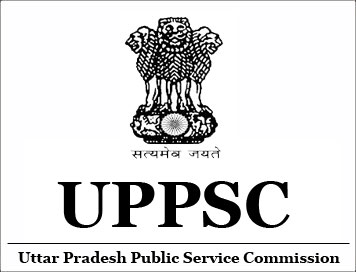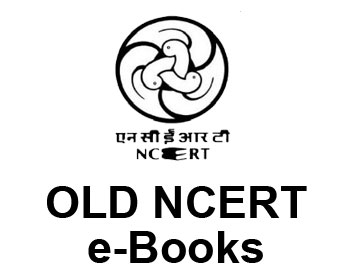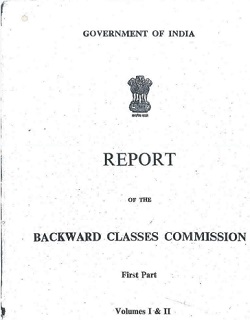
(Notification) UPPSC : ACF RFO EXAM Notification 2020
Post Detail :
1- Candidates applying for Assistant Conservator of Forest / Range Forest Officer Services Examination-2020 should note that they are required to appear in the Combined State / Upper Subordinate Services (Preliminary) Examination 2020 and qualify the same for going to the second stage of Assistant Conservator of Forest / Range Forest Officer Services Main Examination (Written) and Interview.
2- Candidates desirous of applying for Assistant Conservator of Forest / Range Forest Officer Services Examination as well as for Combined State / Upper Subordinate Services Examination can apply through a Common Online Application Form subject to meeting the requisite Eligibility Criteria by them.
3- If at any stage it is found that the candidate has concealed or misrepresented any desired/required information, his candidature may be cancelled and other appropriate action like debarment may be initiated against him.
Education Qualification:
|
10. EDUCATIONAL QUALIFICATION: For the posts included in the Combined State / Upper Subordinate Services Examination- The candidates must possess Bachelors Degree of any recognised University or equivalent qualification upto the last date for receipt of application. This should be mentioned by the candidate in the relevant column of their application form but for some posts specific qualifications have been prescribed of which the details are given below:-
|
Child Development
Project Officer
|
Graduate Degree in Sociology or Social Work or Home Science or any qualification equivalent thereto recognised by the Government
|
|
|
Designated Officer / Food Safety Officer
|
(1) Post Graduate Degree in Chemistry as one of the subjects from a University established by law in India or a qualification recognised by the Government as equivalent thereto,
or
(2) Atleast one of qualification prescribed for Direct Recruitment to the post of Food Safety Officer given as below: A Bachelor's Degree in Food Technology or Dairy Technology or Biotechnology or Oil Technology or Agricultural Science or Veterinary Sciences or Bio-Chemistry or Microbiology or Post Graduate Degree in Chemistry or Degree in Medicine from a recognised University, or any other equivalent/recognised qualification notified by the Central Government,
Provided that no person who has any financial Interest in the manufacture, import or sale of any article of food shall be appointed to be a Food Safety Officer.
|
|
|
Statistical officer
|
Post Graduate Degree in mathematics or Mathematical Statistics or Statistics or Agricultural Statistics from an university recognized by Law in India or equivalent qualification recognised by the Government.
|
|
|
Labour Enforcement
Officer
|
Bachelor's degree with Economics or Sociology or commerce and Post Graduate Diploma or Post graduate Degree in Law / Labour relation / Labour welfare / Labour Law / Commerce / Sociology / Social work / Social welfare / Trade Management / Personnel Management.
|
|
|
Note:- “In case of special educational Qualification posts, the candidates must mention their options clearly, 'yes', in that conditions only they shall be considered for the posts bearing special education qualification.”
Under the Assistant Conservator of Forest / Range Forest Officer Services
Examination.
For the Post of Assistant Conservator of Forest:- ESSENTIAL QUALIFICATION A Bachelor's degree with at least one of the subject namely Botany, Zoology, Chemistry, Physics, Mathematics, Geology, Forestry, Statistics or a Bachelor's degree in Agriculture or Bachelor's degree in Engineering from a University established by Law in India or a Foreign University approved by the Central Government from time to time, or a qualification recognised by the Government as equivalent thereto.
PREFERENTIAL QUALIFICATION : A candidate who has (1) served in the Territorial Army for a minimum period of two years, or (2) obtained a "B" certificate of N.C.C. shall other things being equal, be given preference in the matter of direct recruitment.
FOR THE POST OF RANGE FOREST OFFICER:- ESSENTIAL QUALIFICATION- A Bachelor's Degree with two or more of the subjects, namely Mathematics, Physics, Chemistry, Botany, Zoology, Forestry, Geology, Agriculture, Statistics, Horticulture and Environment or Bechelor's Degree in Agriculture or Bachelor's degree in Engineering or Bachelor's degree in Veterinary Science from a University established by Law in India or possess a qualification recognized by the Government as equivalent thereto.
PREFERENTIAL QUALIFICATION- A candidate who has: (I) Served in the Territorial Army for a minimum period of two years, or (II) Obtained a 'B' Certificate of National Cadet Corps, or (III) Represented the state in any game, shall, other things being equal, be given preference in the matter of direct recruitment.
MINIMUM PHYSICAL STANDARD : (A) For the Post of Assistant Conservator of Forest:- (1) No candidate for direct recruitment shall be appointed to the service unless he/she possesses the minimum standard for height and chest girth as specified below:-
|
|
|
Sex
|
Height
|
Chest girth (Fully expanded)
|
Expansion
|
|
|
1
|
2
|
3
|
4
|
|
|
Male
|
163 cms.
|
84 cms.
|
5 cms.
|
|
|
Female
|
150 cms.
|
79 cms.
|
5 cms.
|
|
|
Provided that the minimum height standard in case of candidates belonging to Scheduled Tribes and to races such as Gorkhas, Nepalies, Assamese, Meghalayan Tribal, Laddakhese, Sikkimiese, Bhutanese, Garhwalies, Kumaunies, Nagas and Arunachal Pradesh candidates, shall be as follows:-
(2) The male candidates will be required to qualify in walking test of 25 kms. to be completed in Four hours and female candidates of 14 kms. to be completed in Four hours. The arrangement for conducting this test will be made by the Chief Conservator of Forests, Uttar Pradesh so as to synchronise with the sittings of the Medical Board.
(B) For the post of Range Forest Officer:-
(1) No candidate for direct recruitment shall be appointed to the service unless he/she possesses the minimum standard for height and chest girth as specified below:-
|
|
|
Sub Registrar, Assistant Prosecuting Officer (Transport)
|
Law Graduate
|
|
|
District Basik Shiksha Adhikari / Associate DIOS and Other equivalent administrative posts, District Administrative Officer
|
Post Graduate Degree
|
|
|
District Audit Officer
(Revenue Audit)
|
Commerce Graduate
|
|
|
Assistant Controller Legal Measurement (Grade-I) / Assistant Controller Legal Measurement (Grade-II)
|
Degree in Science with Physics or Mechanical Engg. As one subject.
|
|
|
Sex
|
Height
|
Chest girth (Fully expanded)
|
Expansion
|
|
|
Assistant Labour
Commissioner
|
Degree in Arts with Sociology or Economics as a subject or
Commerce/Law.
|
|
|
1
|
2
|
3
|
4
|
|
|
Male
|
163 cms.
|
84 cms.
|
5 cms.
|
|
|
District Programme
Officer
|
Degree in Sociology or Social Science or Home Science or
Social Work.
|
|
|
Female
|
150 cms.
|
79 cms.
|
5 cms.
|
|
|
Provided that the minimum standard of height in case of candidates belonging to Scheduled
Tribes and to races such as Gorkhas, Nepalis, Gardhwalis, Kumaonis shall be as follows:-
|
|
|
Senior Lecturer, DIET
|
Post Graduate Degree with B.Ed.
|
|
|
District Probation
Officer
|
Post Graduate Degree in Psychology or Sociology or Social Work or any qualification equivalent thereto or Post Graduate Diploma in any Branch of Social Work from any recognised Institute of Social Work.
|
|
Sex
|
Height
|
|
|
|
1
|
2
|
|
|
Male
|
152.5 cms.
|
|
|
Female
|
145.0 cms.
|
|
|
|
Contd...
|
|
Pay Scale :
1. Assistant conservator : Rs.15600/- to Rs.39100/-, Grade Pay- Rs.5400/-, (Levelof Forest 10 in the pay matrix Group) Group “B”, Gazetted.
2. Range Forest Officer : Rs.9300/- to Rs.34800/-, Grade Pay – Rs.4800/-, (Levelof Forest 8 pay matrix 47600 - 151100) Group “B”, Gazetted.
Age :
Candidates must have attained the age of 21 years and must not have crossed the age of 40 years on July 1, 2020 i.e. they must have not been born earlier than 2nd July, 1980 and not later than July 1, 1999. For PH candidates, the maximum age limit is 55 years i.e. they must have not been born before 02 July, 1965.
How to Apply :
At the top of the page there is a Declaration. The candidates are advised to go through the contents of the Declaration carefully. Candidate has the option either to agree or disagree with the contents of Declaration by clicking on 'I agree' or 'I do not agree' buttons. In case the candidate opts to disagree, the application will be dropped, and the procedure will be terminated. Accepting to agree only will submit the candidate's On-line Application. Notification Details: This section shows information relevant to notification. Personal Details: This section shows information about candidate's personal details i.e. Registration Number, Candidate's Name, Father/Husband's Name, Gender, Date of Birth, UP domicile, Category, Marital Status, Email-ID and Contact Number. Other Details of Candidate: Other details of candidate shows the information details about UP Freedom Fighter, Ex Army, service duration and your physical deformity. Education & Experience Details: It shows your educational and experience details. Candidate Address, Photo & Signature details: Here you will see your complete communication address and photo with your signature. Declaration Segment: At the bottom of the page there is a 'Declaration' for the candidates. Candidates are advised to go through the contents of the Declaration carefully. After filling all above particulars there is provision for preview your detail before final submission of application form on clicking on “Preview” button. Preview page will display all facts/particulars that you have mentioned on entry time if you are sure with filled details then click on “Submit” button to finally push data into server with successfully submission report that you can print. Otherwise using “Back” button option you can modify your details. [CANDIDATES ARE ADVISED TO TAKE A PRINT OF THIS PAGE BY CLICKING ON THE “PRINT” OPTION AVAILABLE]
1. On clicking “View Application status” option in candidate Segment page you can see current status of candidate.
2. On clicking “Result” option in candidate Segment page candidate can see result status of periodically.
3. “Interview/Exam Schedule” option in candidate Segment page candidate can see interview and examination schedule details periodically.
4. On clicking “Key Answer Sheet” candidate can download key answer sheet.
5. On clicking “Admit Card/Hall Ticket” candidate can download their Admit Card using with some basic credential of candidate.
6. On clicking “List of Rejected Candidate” candidate can view rejected candidate list.
7. On clicking “Syllabus” candidate can view syllabus of particular examination. (Candidates applying On-line need NOT send hard copy of the On-line Application filled by them On-line or any other document/certificate/testimonial to the Uttar Pradesh Public Service Commission. However they are advised to take printout of the On-line Application and retain it for further communication with the UPPSC.) (The Candidates applying for the examination should ensure that they fulfill all eligibility conditions for admission to examination. Their admission at all the stages of the examination will be purely provisional subject to satisfying the prescribed eligibility conditions). UPPSC takes up verification of eligibility conditions with reference to original documents at subsequent stages of examination process.
LAST DATE FOR RECEIPT OF APPLICATIONS: On-line Application process must be completed (including filling up of Part-I, Part-II and Part-III of the Form) before last date of form submission according to advertisement, after which the Web. Link will be disabled.
Fee Payment :
In the ON-LINE Application process, after completing the procedure of first stage, Category wise prescribed examination fee is to be deposited as per instructions provided in second stage. The prescribed fee of preliminary examination for different categories is as under:-
(i) Unreserved/Economically weaker sections/ : Exam fee Rs. 100/- + On-line processing fee
Other Backward Class Rs. 25/- Total = Rs. 125/-
(ii) Scheduled Caste/ Scheduled Tribe : Exam fee Rs. 40/- + On-line processing fee Rs. 25/- Total = Rs. 65/-
(iii) Handicapped : Exam fee NIL+ On-line processing fee Rs. 25/- Total = Rs. 25/-
(iv) Ex-Serviceman : Exam fee Rs. 40/- + On-line processing fee Rs. 25/- Total = Rs. 65/-
(v) Dependents of the Freedom : According to their original category Fighters/Women
Important Dates:
- Date of Commencement of On-line Application: 21/04/2020
- Last Date for Receipt of Examination Fee On-line in the Bank: 18/05/2020
- Last Date for Submission of On-line Application: 21/05/2020




